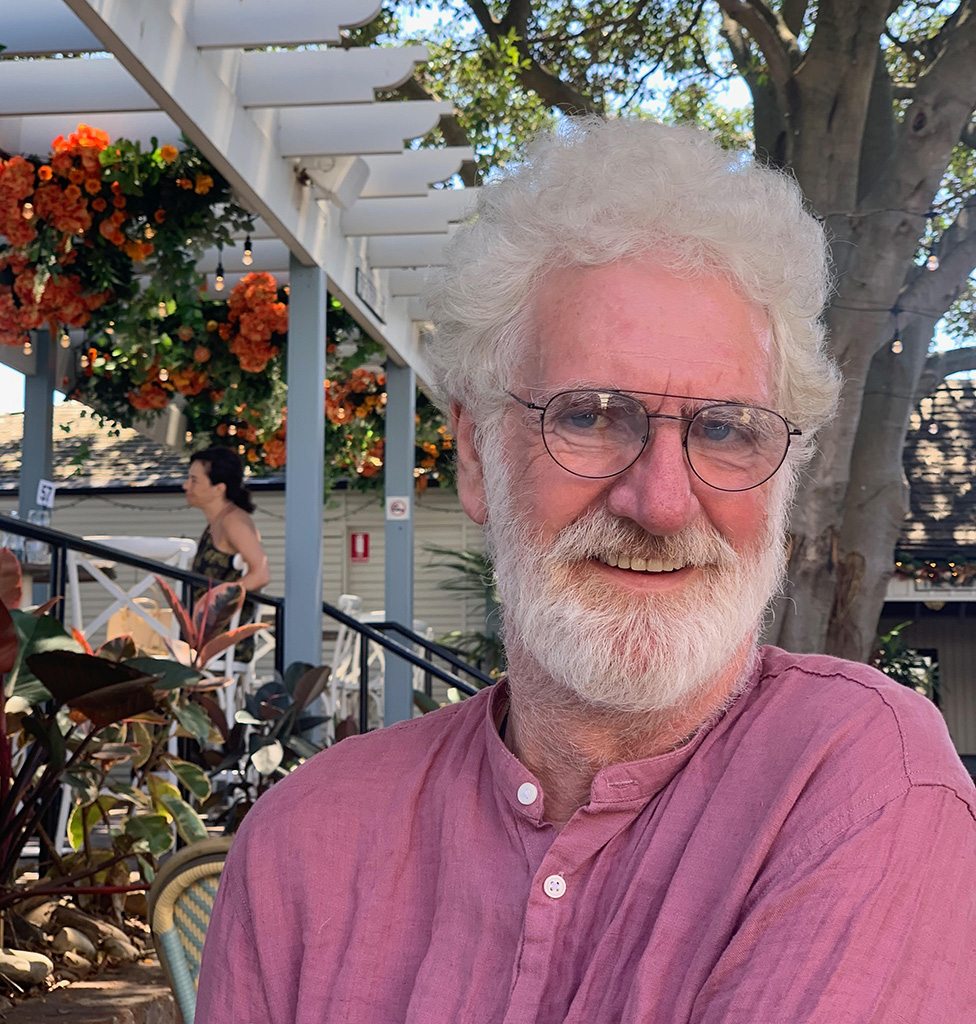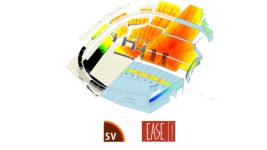PEOPLE
15 Jul 2024
WHY DO I (STILL) DO THIS?

Subscribe to CX E-News
Roderick van Gelder Studies Death
We meet at the trendy yacht- themed Woolwich Pier Hotel on a balmy slow Summer’s day between Christmas and New Year. Starting with a beer each, I’m keen to know Roderick’s journey and why, at 66, he keeps working.
JG: How many arrows in your quiver, Rodders?
RvG: Course lecturer, restorer of analogue tapes, production management, bit of CAD work; site planning, lighting design. It flows from one to the other. I ended up in theatre by accident.
JG: In Amsterdam?
RvG: With the National Theatre Company. Then National Ballet, then Opera from props to lighting, audio, production. Ultimately freelance.
JG: So, Australia?
RvG: Sydney Dance Company. Context was in the late 80s I toured a lot of overseas dance companies in Europe, and SDC was one of them. John Montgomery was their lighting designer and production manager and he left to become technical manager for the Victorian Arts Centre. He suggested I’d be a good option. They called me in Amsterdam and said ‘you want to come play with us?’ and I said ‘Of course!’
JG: You’d been here before….
RvG: In 1988 doing some work on a festival. Felt really at home here. I was 33 years old.
JG: How do you keep going?
RvG: I just keep doing it. I work in so many different directions when I get bored with one thing there’s always something else. There has been a time when I was bored with lighting design because everyone wanted lights to wobble and change colour a lot – that’s not my style. I walked away. Through another weird connection I ended up at the Hordern Pavilion, venue management lead to safety management and risk assessment.
JG: Hordern management company Playbill were partnered with Lend Lease, the developer?
RvG: Interesting. Just after I started, they started a renovation – strip everything, roof off, and that was interrupted every few months by major events. They insisted everything we did at Hordern had a full risk assessment, I was trained up to do that and discovered many were struggling with safety management. Eventually I left and started my business to help people with simple and realistic safety systems rather than paperwork for paperwork’s sake.
JG: The crowd management course you now deliver has led you to study a lot of grisly disasters?
RvG: Other way around; I did a lot of study of the big disasters in Europe, I went to the site of the Love Parade disaster in Germany, with 200,000 people. I had to understand it. Once you look into it, you see one thing on top of another thing, and then you have a disaster.
JG: 21 people died from suffocation and 652 people were injured.
RvG: The scary thing is it was totally avoidable. I got hold of almost all the CCTV footage from 24 cameras. They lost control of the site in the afternoon. People arrived by train, through a ticket checkpoint, there were two tunnels under the tracks that merge to one ramp. The festival features DJs on trucks, and whenever one approaches, they shut down pedestrians. The flow was too slow. People were backed up in the tunnel. Police shut entry to the tunnels. No announcements. Many people outside had preloaded on drugs and wanted to get in. Then they were rioting, so the police opened the gate. Now the early arrivals were leaving, and the ramp was the only way out.
JG: Any examples of near misses in Australia?
RvG: One that almost was a recent disaster was the Victorian festival Beyond the Valley with people trapped in a queue of cars in 38 degree heat for more than nine hours while trying to leave. That was a predictable problem. They didn’t have the right traffic plan. Everyone leaves at the same time.
JG: True of every event, the build-up is graduated and the exit is all out. What is really good now, compared to the old days?
RvG: Not much. People thinking ‘we’ve always done it this way’ is a big risk. Same venue with a different style of show means a different crowd management plan. You can’t have one that fits all. Demographics is a big deal – Andre Rieu’s crowd won’t riot, Metallica’s crowd is a riot. A happy punter is a cooperative punter.
JG: You live in a fairly remarkable building.
RvG: It’s the old telephone exchange for Hunters Hill. It suits me perfectly. All my family are in the Netherlands. I share my house with a cat called Trim, named after Matthew Flinders’ cat. If you look at the Matthew Flinders statue outside the Library of NSW on Macquarie street, in the window behind him, there’s a little cat.
* We had a Greek influenced meal next door at Ironwood. There was wine involved.
Subscribe
Published monthly since 1991, our famous AV industry magazine is free for download or pay for print. Subscribers also receive CX News, our free weekly email with the latest industry news and jobs.






